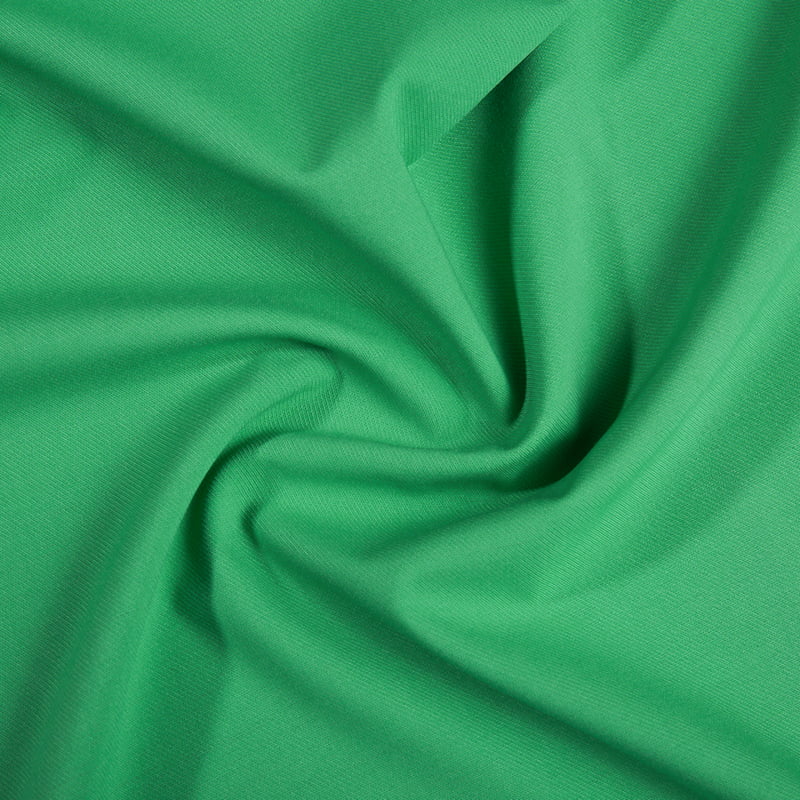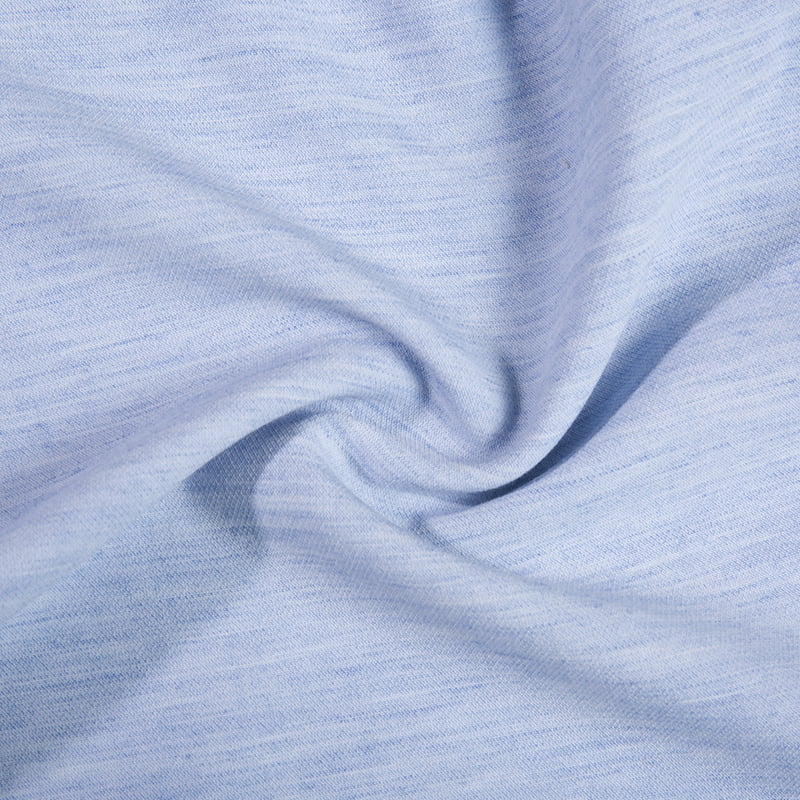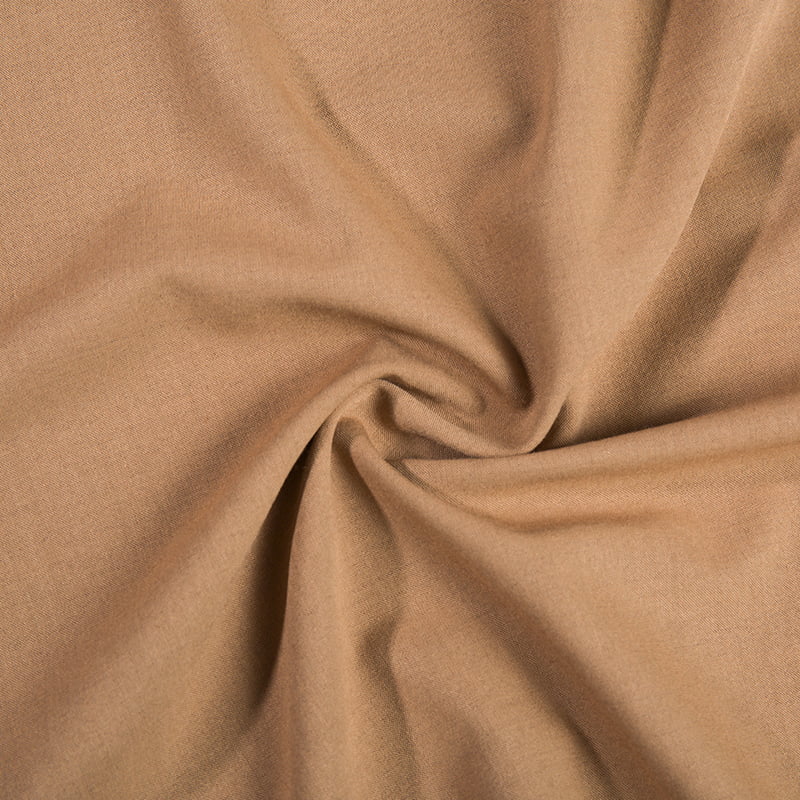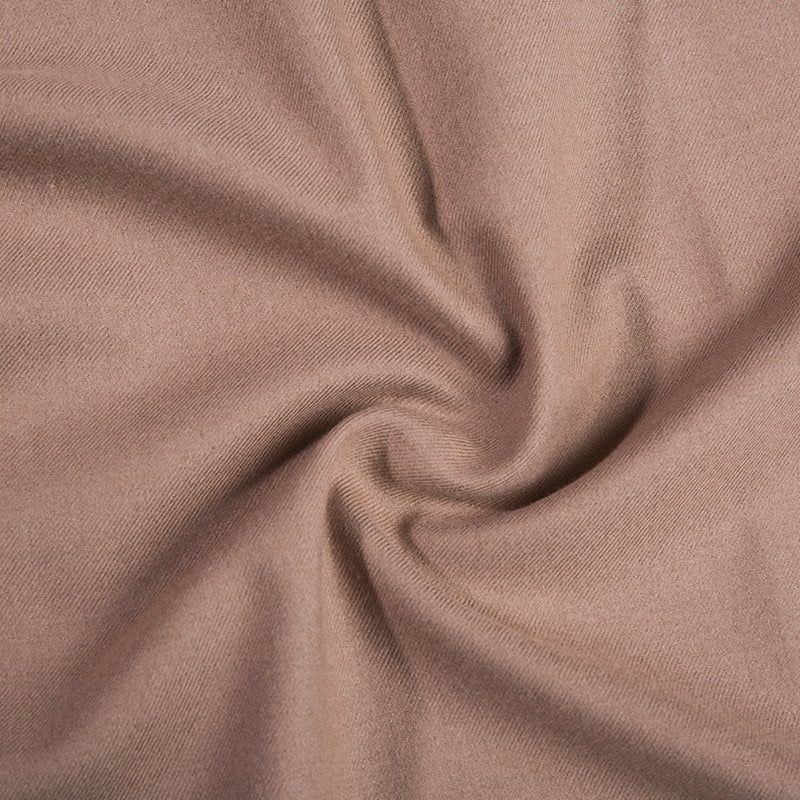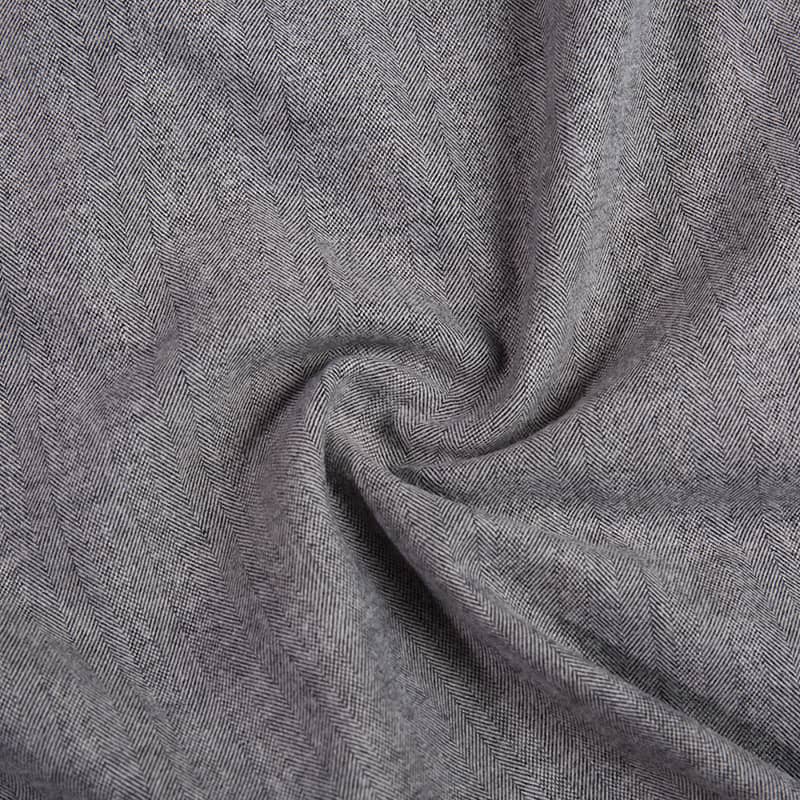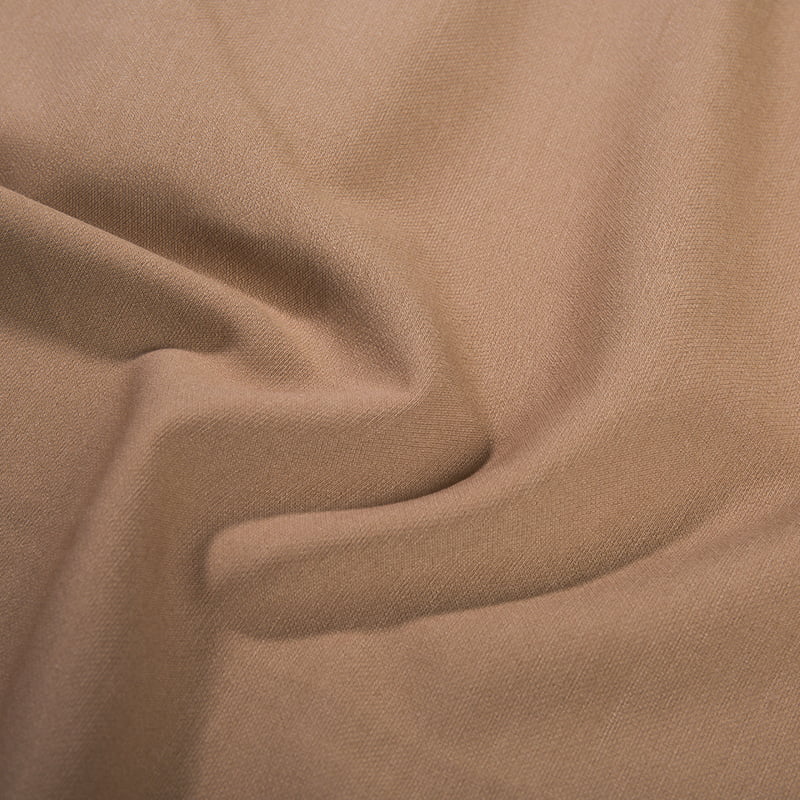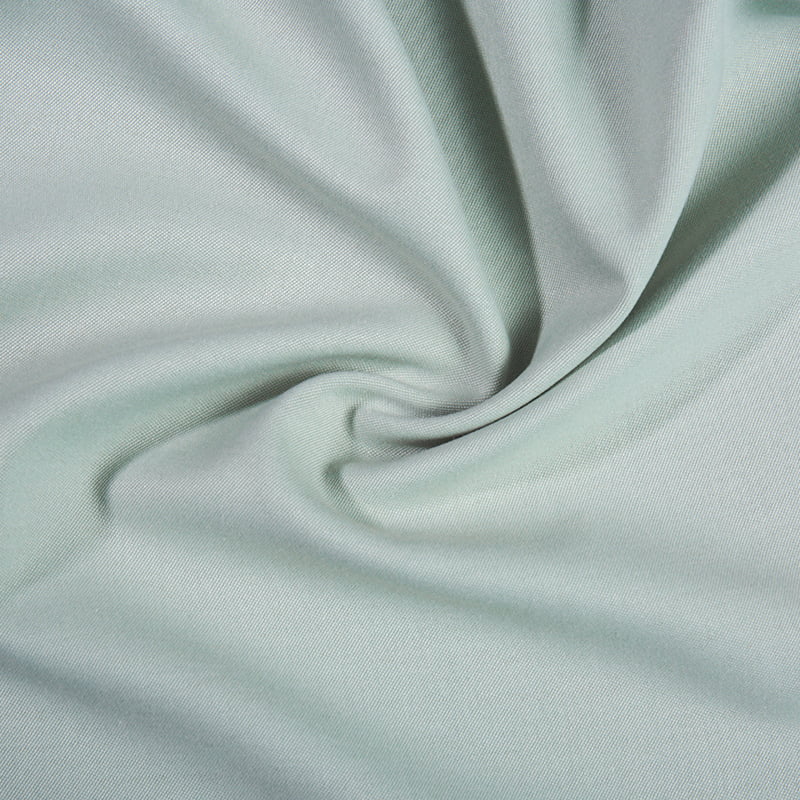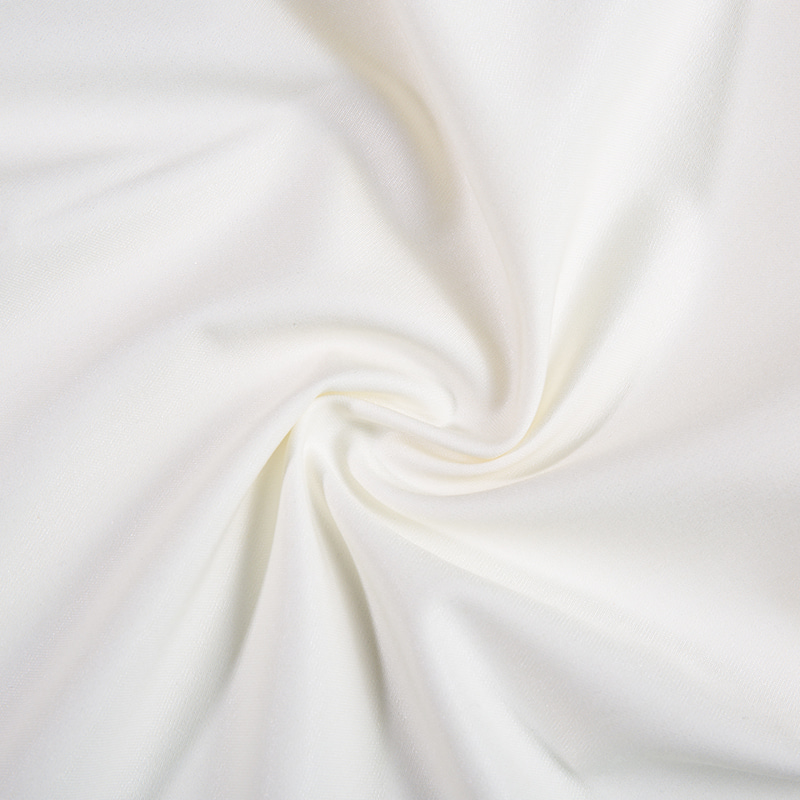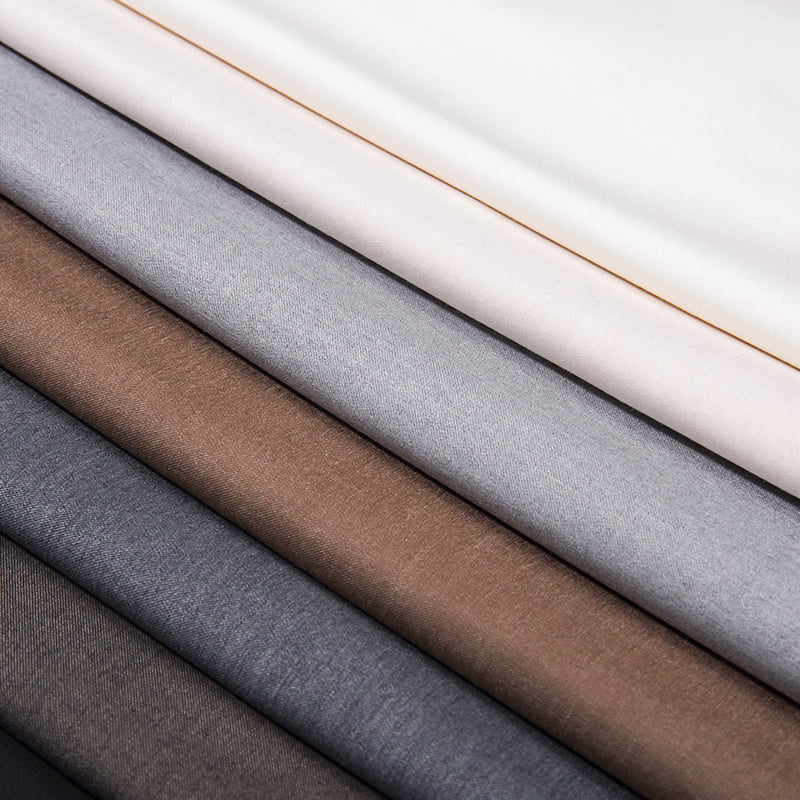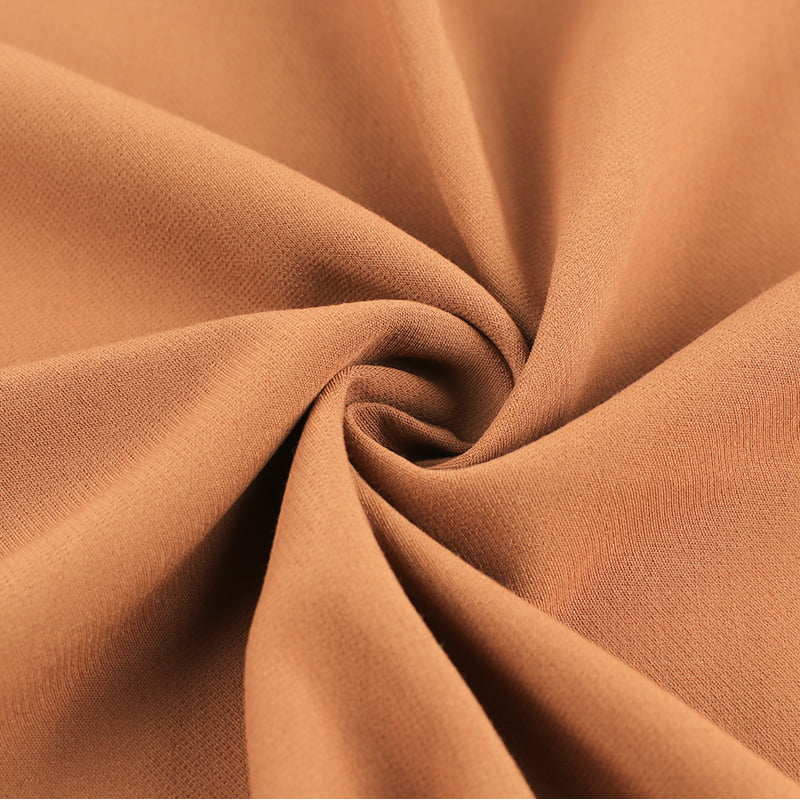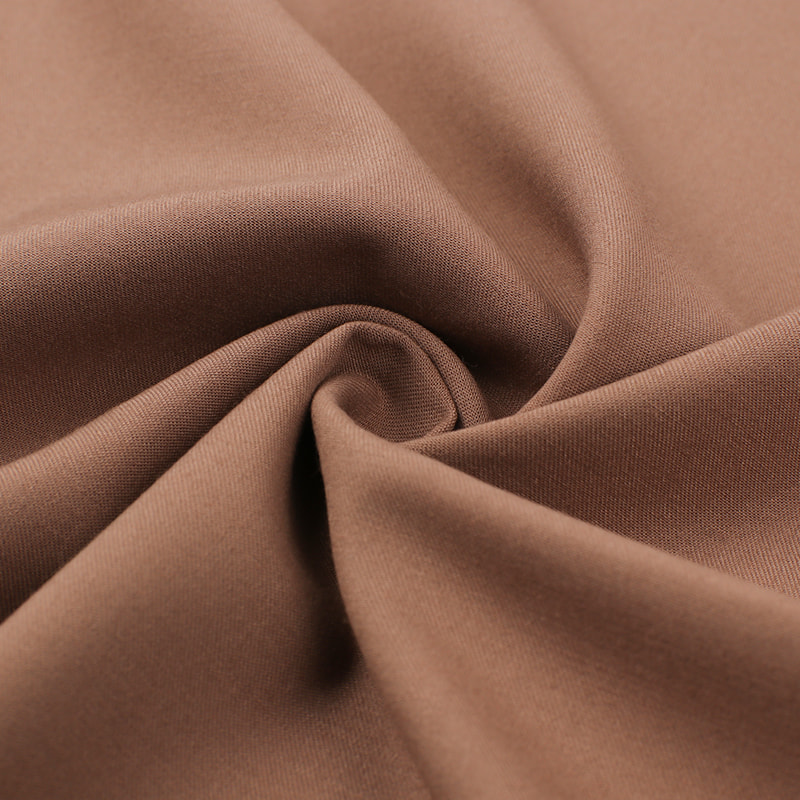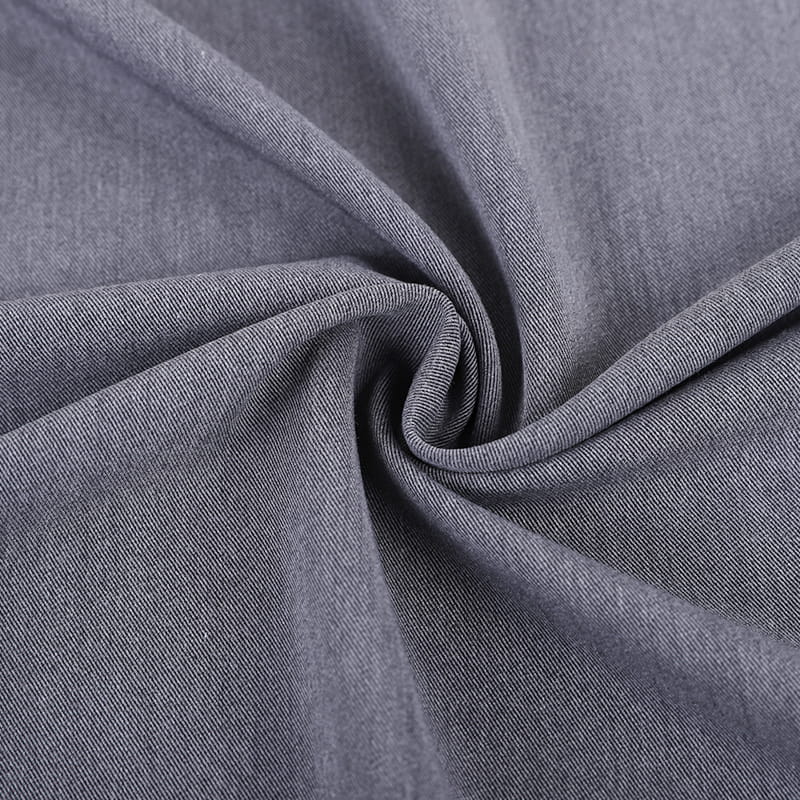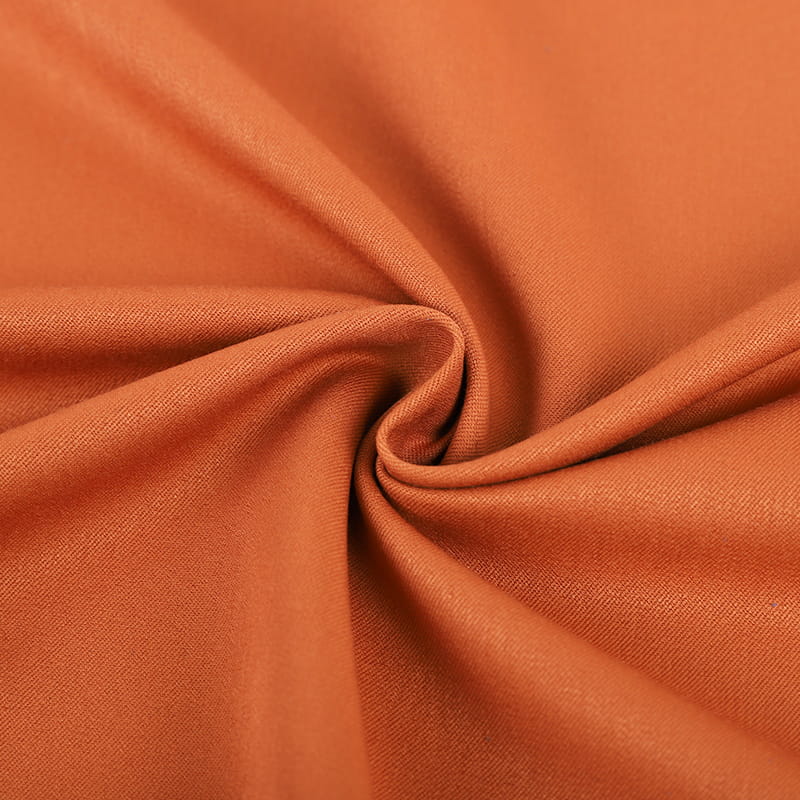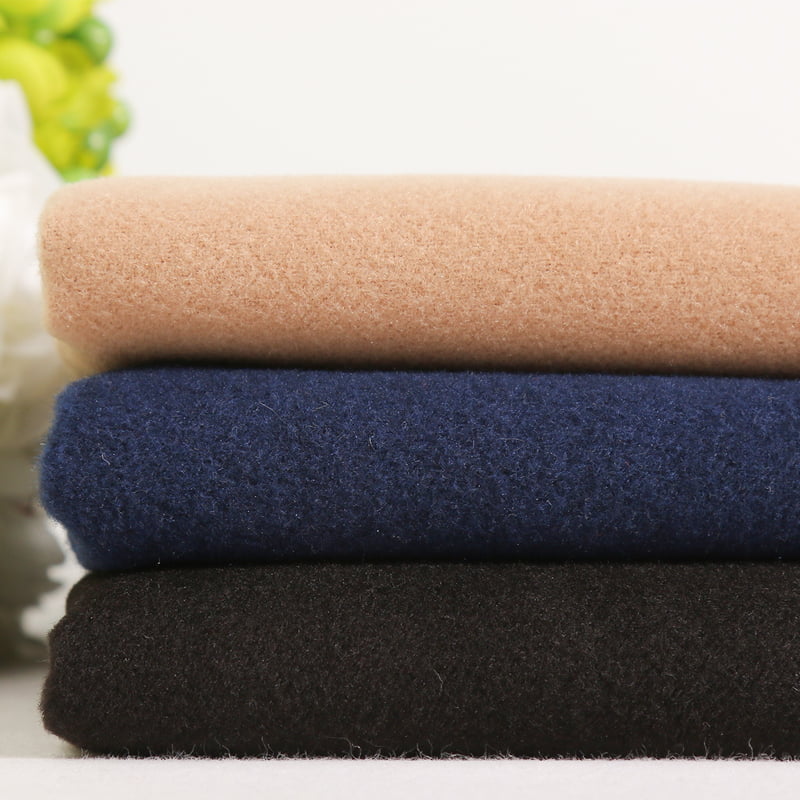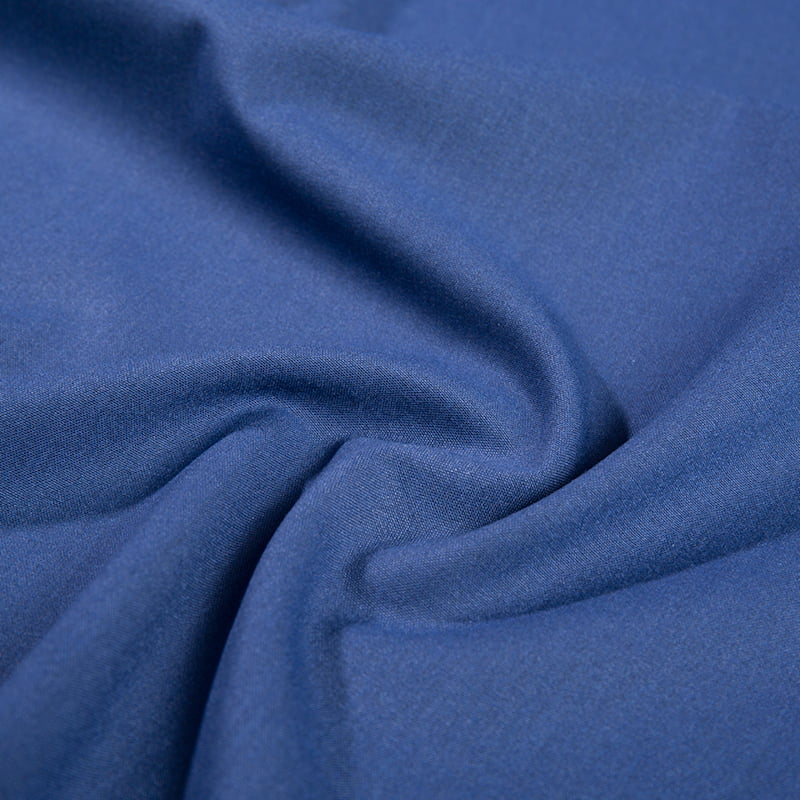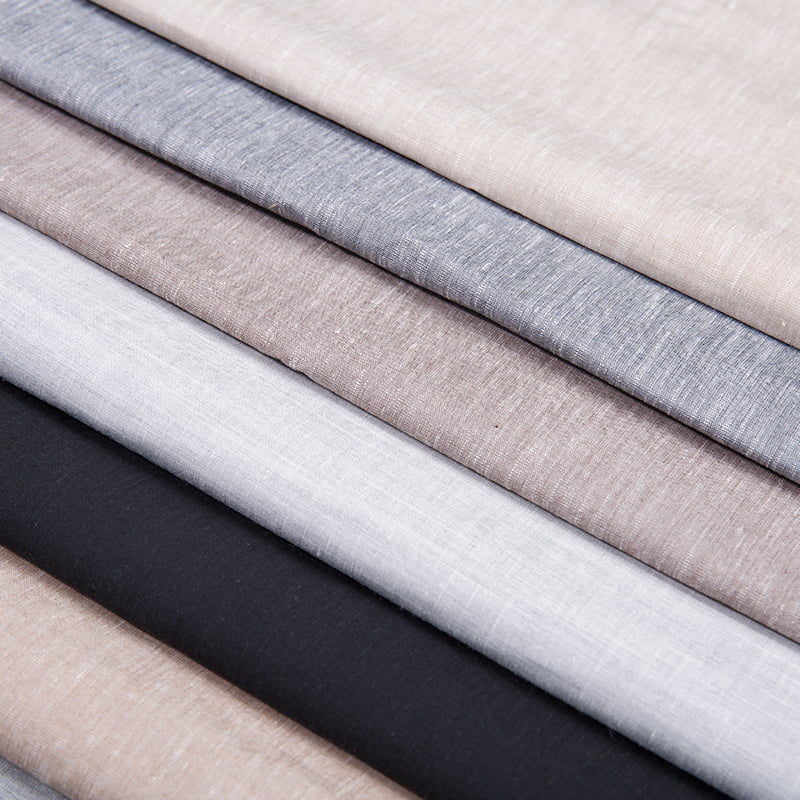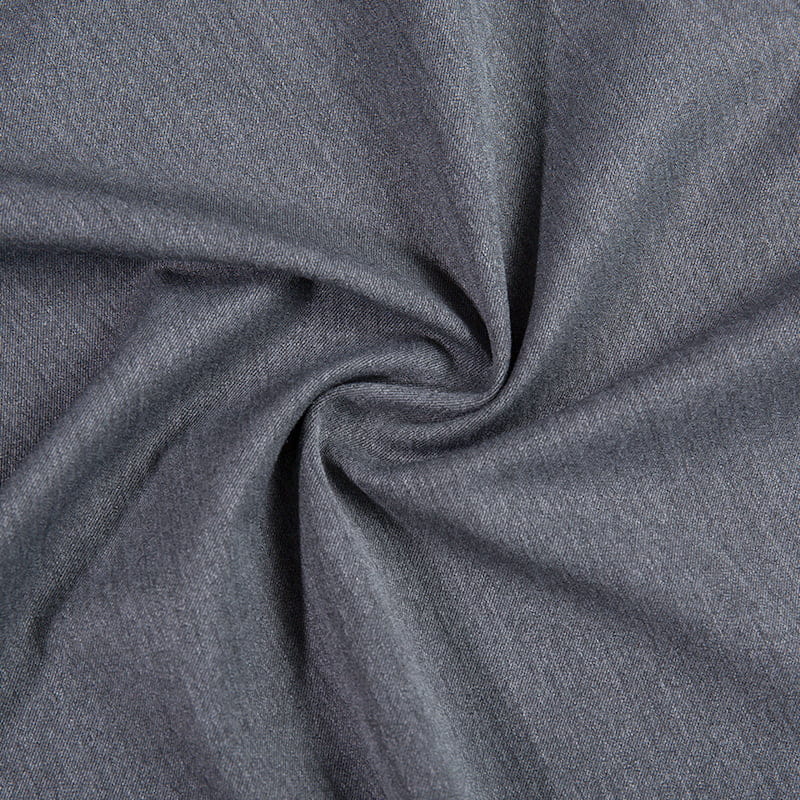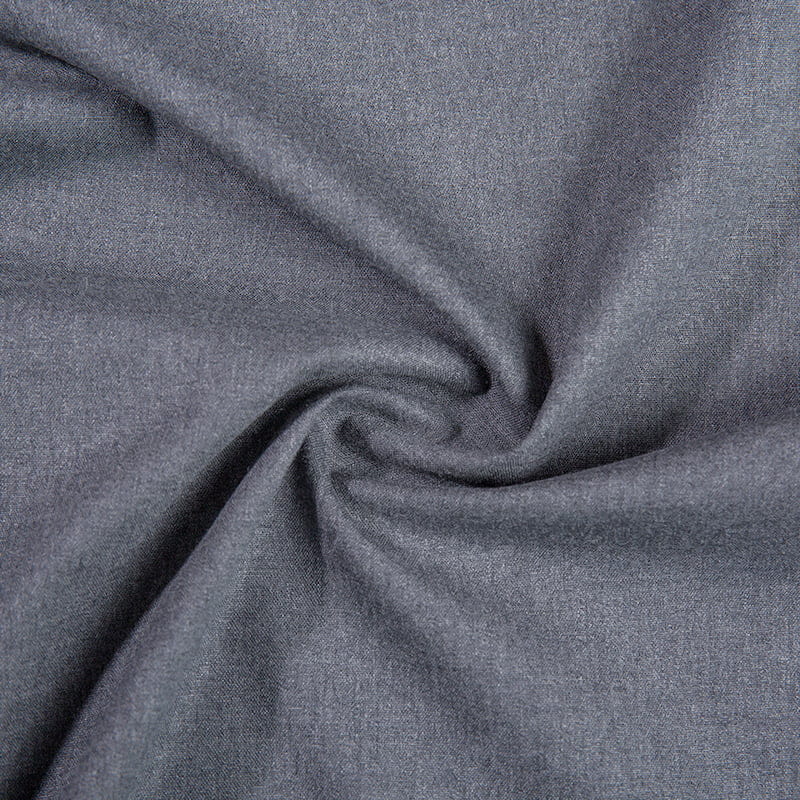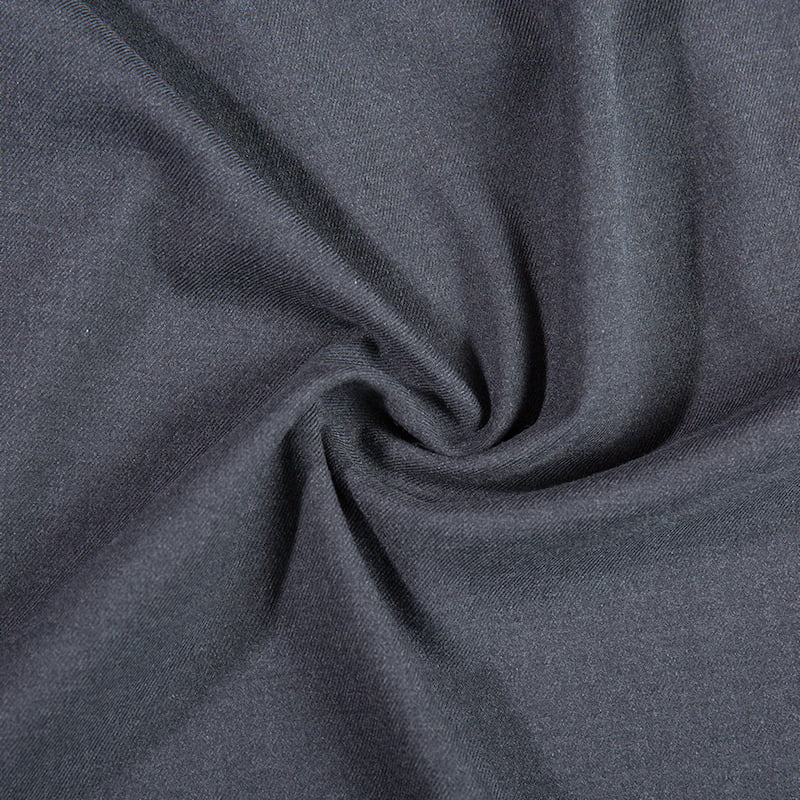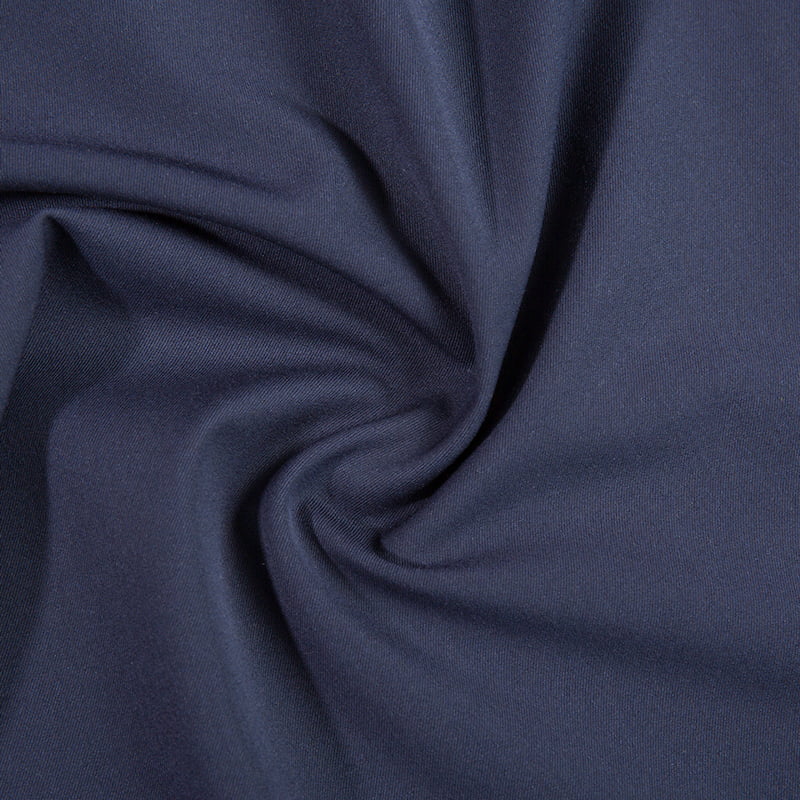I. Analysis of core concepts
Dyed Poly Rayon Woven Fabric With Stretch is a clever combination of three key fibers, formed by weaving and dyeing:
Polyester: Provides the fabric skeleton, giving it high strength, wear resistance, wrinkle resistance, quick drying and good dimensional stability.
Rayon: Contributes to the soft touch, excellent drape and moisture permeability of natural fibers, balancing the "plastic feel" of chemical fibers.
Stretch: Usually spandex (such as Lycra®) or new polyester elastic fiber (PTT), woven in the form of core-spun yarn, providing key rebound and stretching capabilities.
Woven structure: The warp and weft yarns are woven vertically to form a fabric base with a stable structure and not easy to deform.
Dyeing process: In view of the different characteristics of polyester (disperse dyes, high temperature and high pressure dyeing) and rayon (reactive dyes or direct dyes), a complex double dyeing process is required to ensure uniform and firm colors.
2. Core performance and advantages: exquisite balance of multiple characteristics
Excellent comfort and functionality:
Flexible and close to the body: Rayon brings silky skin-friendly feeling, polyester ensures that the fabric is not easy to collapse, and the wearing comfort is far superior to pure chemical fiber.
Dynamic freedom: Elastic fiber provides excellent transverse (weft elastic) or bidirectional (warp and weft elastic) stretch (elasticity rate 10%-50%+), adapting to large-scale activities without restraint.
Breathable and breathable: Rayon significantly improves moisture absorption (moisture regain rate is about 13%, much higher than 0.4% of polyester), combined with polyester's moisture conduction and quick drying, to maintain a dry body feel.
Excellent durability and easy maintenance:
Strong wear resistance: Polyester fiber has strong support, outstanding tear resistance and friction resistance, and significantly extends the service life.
Wrinkle resistance and shape retention: Polyester gives the fabric good wrinkle resistance and dimensional stability, is not easy to deform after washing, and maintains a crisp appearance.
Convenient care: Most are machine washable, quick drying and ironing-free, significantly reducing daily maintenance costs and time.
Outstanding appearance:
Rich colors and luster: The dyeing process is mature, which can achieve rich colors with fullness, brightness or soft and delicate colors; rayon gives a natural soft luster, and polyester can increase the mercerization effect.
Elegant drape: The rayon and elastic fiber work together to make the fabric have excellent drape, and the lines are smooth and natural (the drape coefficient is often better than pure polyester fabrics).
Diversified textures: The woven structure can create rich textures such as plain, twill, and satin, and combine yarn changes to meet different design needs.
Economic and applicability:
High cost performance: It has a price advantage over silk or high-end natural blended fabrics.
Wide application: The balanced performance enables it to adapt to a variety of needs from daily casual wear to specific functional clothing.
III. Key production processes and technical points
Fiber and yarn preparation:
Customized blending ratio: Common ratios such as polyester 60-80%/rayon 20-40%/spandex 3-15%, the ratio adjustment can accurately control the cost, feel and elasticity.
Elastic yarn technology: The core is "core-spun yarn" (spandex as the core, polyester/rayon as the outer layer), ensuring that the elasticity is evenly released and not easy to age and break.
Challenges and countermeasures of dyeing process:
Double dyeing process: It is necessary to dye in steps (first dye polyester at high temperature, then adjust pH/temperature to dye rayon) or select special dyes (such as disperse/active one-bath dyes).
Color fastness guarantee: Strengthen the treatment of washing, friction, and light fastness (such as the application of fixing agent), especially pay attention to the improvement of wet friction fastness of rayon components.
Elasticity protection: Strictly control the dyeing temperature (spandex has limited heat resistance, usually operated at ≤120℃) and mechanical tension to prevent permanent loss of elasticity.
Finishing to enhance performance:
Pre-setting: High-temperature stretching and setting stabilizes the fabric width and elasticity, reducing subsequent shrinkage.
Functional finishing: Anti-ultraviolet (UPF 40+), anti-fouling, flame retardant (such as for workwear) or antibacterial coatings can be added to increase added value.
Softening: Improve the hand feel, especially for fabrics with a high proportion of polyester.
IV. Diversified application areas
Fashionable women's clothing:
Dresses/skirts: Use their drape, elasticity and rich colors to create slim and elegant styles.
Shirts/tops: Comfortable and breathable, wrinkle-resistant, with moderate elasticity to enhance the wearing experience.
Pants (casual pants/suit pants): Elasticity provides freedom of movement, and the shape retention of polyester ensures a crisp appearance.
Leisure and sportswear:
Light sportswear/yoga clothes: Medium and high elastic styles meet stretching needs, and moisture absorption and quick drying improve comfort.
Casual coats/jackets: Wear-resistant and easy-care properties are very suitable for daily wear.
Home textiles:
Sofa covers/chair covers: Wear-resistant, wrinkle-resistant, rich in colors, easy to disassemble and wash and maintain.
Curtains/window screens: Good drape, beautiful drape, can provide shading or semi-transparent effects (need to be combined with craftsmanship).
Decorative cushions: Easy to dye with rich patterns and strong durability.
Functional workwear/uniforms:
On the basis of wear resistance and easy care, flame retardant, anti-static and other functional finishing can be added to meet the needs of specific industries (such as hotels, catering, light industry).
V. Key points for purchase and quality considerations
Elastic performance:
Direction and amplitude: Clarify the demand (weft elastic/warp and weft elastic) and the required stretch rate (such as 15% vs 30%).
Resilience: Whether it can shrink quickly and completely after stretching (the recovery rate should be ≥90%) to avoid relaxation and deformation.
Ingredients and processes:
Proportion authenticity: Check the ingredient label or test report.
Dyeing quality: Check color uniformity (matching difference, edge and center difference), test color fastness (friction, washing, sweat stains).
Fabric quality: Observe whether the weaving is tight and smooth, and whether there are defects (broken yarn, holes, stains).
Physical indicators:
Gram weight: Affects thickness and use (such as 80-150gsm is commonly used for spring and summer clothes).
Strength and tear force: Ensure durability.
Shrinkage: After good pre-setting, the shrinkage of the fabric should be controlled within 3%.
VI. Market prospects and development trends
Continued growth: Driven by fast fashion, sports and leisure trends and the demand for multifunctional and comfortable fabrics, the market continues to expand.
Sustainable innovation:
Recycled raw materials: Use recycled polyester (rPET) and environmentally friendly viscose (such as lyocell).
Environmentally friendly processing: Low bath ratio dyeing, waterless dyeing (supercritical CO2 dyeing), and bio-enzyme treatment technology applications.
Recyclable design: Explore single material or easy-to-separate blending technology to enhance the recycling potential of fabrics.
Functional integration: Develop high-end products in combination with intelligent temperature control, conductivity, adaptive color change and other technologies.


 English
English 中文简体
中文简体 日本語
日本語 한국어
한국어 Español
Español русский
русский
